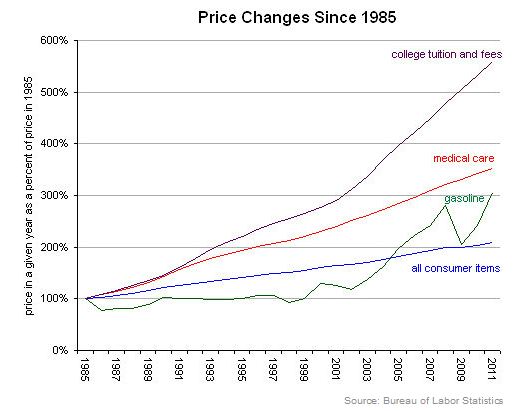https://www.wsj.com/articles/in-many-states-students-at-public-universities-foot-biggest-part-of-the-bill-1522315802
For the first time, students in more than half of all U.S. states are paying more in tuition to attend public colleges or universities than the government contributes.
The privatization of public education has been under way for decades but this inflection point was hastened by deep cuts states made to their higher-education appropriations after the 2008 recession. Funding levels since then have only tepidly recovered, according to a report released Thursday by the State Higher Education Executive Officers Association.
The recovery has been hampered by increased demands states face to fund Medicaid, the state-federal health insurance program for the poor and disabled, and rising public-employee health and retirement costs. Those costs are outpacing growth in tax revenue year after year.
The average tuition for a four-year public college or university was $6,572 in 2017, up from $4,784 in 2008, adjusted for inflation in 2017 dollars.
Only six states have reached or surpassed their prerecession crests in 2008; 19 states remain at least 20% below their prerecession level.
The amount of money states spend on higher education varies dramatically. Vermont appropriates the least, at $2,695 a student—down 20% since the recession; Wyoming spends the most, $18,237, up 4%.
Because tuition has increased, the average amount of revenue public universities received per student across the country increased to $14,151 in 2017, up from $13,375 in 2008.
Higher education is the third-largest budget outlay in state spending from state and local tax sources, behind K-12 and Medicaid appropriations, according to the report. In fiscal 2017, 9.9% of state general funds were allocated to higher education, down from 12.9% in 1995.
College Board data show that tuition and fees for in-state students at public universities this year average $9,970. For out-of-state students, the average is $25,620.
Bright Futures merit scholarships would be permanently expanded under a bill sent to Gov. Rick Scott on Monday.
The Senate voted 33-5 for the measure (SB 4), which was originally approved by the Senate in the first week of the session and is a top priority for Senate President Joe Negron, R-Stuart.
The bill will cover 100 percent of the tuition and fees for some 45,000 top-performing Bright Futures students, who are known as “academic scholars.”
It also includes $300 per semester for textbooks and allows the scholarships to be used for summer classes.
Another 48,000 students, known as “medallion” scholars, will see their Bright Futures scholarships, which now cover about half the cost of tuition and fees, rise to 75 percent, or about $159 of the average $200 per credit hour charge for university courses. It will also cover summer classes.
The measure also expands some need-based aid programs, including doubling the state match for scholarships awarded to “first generation” college students. And it creates a new scholarship program for students from farmworker families.
Florida State University ranked 63 among all colleges and No. 14 in Kiplinger's list of Best Values in Public Colleges.
Florida State University (63); Average debt at graduation: $23,679


No comments:
Post a Comment